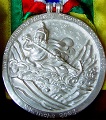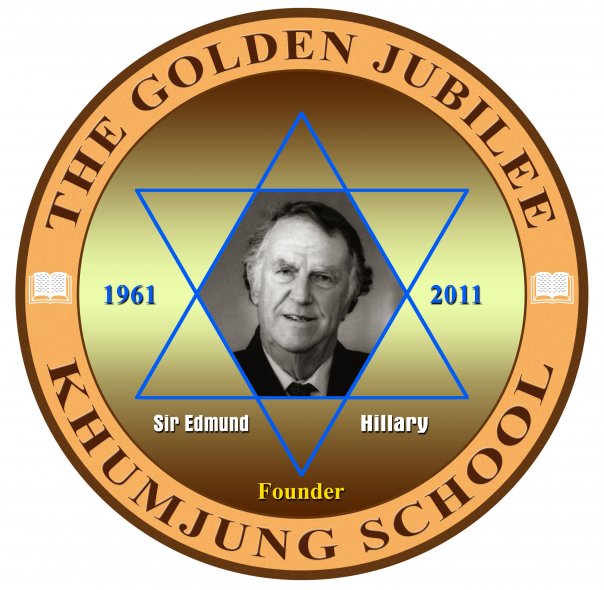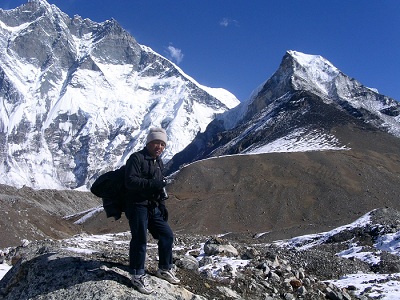 |
The Sir Edmund Hillary Mountain Legacy Medal |
 |
2011 Hillary Medalist: Ang Rita Sherpa
All Medalists
Ang Rita Sherpa has won the 2011 Sir Edmund Hillary Mountain Legacy Medal. A native of Khunde, the villge where Edmund Hillary established the only hospital in Nepal's Khumbu District, Mr. Sherpa has dedicated himself to the management of remote mountainous protected areas. His focus has been on conserving ecosystems while expanding sustainable livelihoods for mountain communities. Since 1988, he has worked for The Mountain Institute (TMI), where he currently serves as Senior Program Manager for the Himalayan Program in Kathmandu, Nepal.
Ang Rita has an undergraduate degree in Parks, Recreation and Tourism from Lincoln University, New Zealand, and he worked for nine months as a volunteer in the U.S. Parks Service (Yellowstone and Grand Teton National Park) before joining The Mountain Institute. He received his masters degree in Protected Landscape Management from the University of Wales in 2002. His thesis is entitled "Making Wilderness Area Management Sustainable through Ecotourism: A Case Study from the Makalu Base Camp of Makalu-Barun National Park, Nepal."
Conservation and Economic Opportunity in the Nepal Himalaya
Ang Rita Sherpa was a key member of the task force that prepared for the establishment of Makalu-Barun National Park; his work included biological inventories, community consultation and boundary demarcation. In 1992, Mr. Sherpa was assigned to serve as Conservation Education, Tourism, and Natural Resource Officer for the Makalu-Barun National Park Project. In addition to initiating conservation education programs, he developed training program guidelines for local entrepreneurs, scouts and guides.
In 2004, The Mountain Institute and the American Alpine Club launched a project entitled Community-based Alpine Conservation and Restoration of the Mt. Everest Alpine Zone with the goal of protecting and restoring the fragile alpine ecosystems of Sagarmatha National Park and its Buffer Zone. As part of the project, the Khumbu Alpine Conservation Council (KACC) was formed with financial and technical support from TMI, the Small Grant Programme (SGP) of the United Nation Development Program (UNDP), Argosy Foundation, and the National Geographic Society. Local participation has lead to improved enforcement of regulations, reducing fuel wood use and allowing slow-growing high altitude juniper shrublands and pastures to regenerate. Ang Rita was responsible for the implementation of this project in partnership with local Sherpa communities, government and non-government agencies, and recreational stakeholders. The KACC project has contributed to the development of a model for alpine conservation which has since been successfully applied to alpine regions in the Makalu-Barun National Park and in Peru's Huascarán National Park.
Sacred Sites Trail
Ang Rita Sherpa was instrumental in the Sacred Sites of the Khumbu Region project, which TMI has been implementing since 2004. The main goal of the Sacred Sites Trail is to improve local livelihoods while strengthening cultural traditions in the Khumbu region of Nepal by expanding community-managed tourism in those parts of Khumbu that lie off the primary "Everest trail." Specific steps range from monument restoration to documentation of musical traditions to promotion of the use of cloth bags (rather than disposable plastic bags) for rice exchanges during Dumji festival celebrations.
More recently, from July 2008 to June 2009, Ang Rita designed and implemented TMI's Lake to Lake: Food for Enterprise Program in Nepal's Karnali Zone. The program entails a panoply of projects, including promotion of apple horticulture, water sanitation, and conservation, designed to alleviate malnutrition in populations impacted by conflict as well as chronic food deficit.
International Co-operation
From 1995 to 1997, Ang Rita Sherpa was responsible for trans-boundary exchange programs between the Tibet and Nepal. In 2002 Mr. Sherpa facilitated a community-based workshop for TMI's program in Tibet. The main objective of the workshop was to assess the potential for tourism growth in the village of Tedrum and surrounding areas and to recommend means of mitigating the effects of increased tourism on the cultural heritage and the natural environment. Tedrum is a religiously significant site, encircled by meditation caves, medicinal hot springs, and three monasteries that are especially important as they represent the only remaining centers of the Drigung ("Whispered Transmission") branch of the Kagyu Sect of Tibetan Buddhism. Nonetheless, the area currently had relatively low productivity and a weak local economy due to high elevation, poor road access, a single-product economy, poor communications and low level of education.

A Family Tradition
Ang Rita's father is the late Mingma Tsering, who served as Sir Edmund's foreman for all of the early building projects. For years, the Khunde home of Mingma Tsering and his wife Ang Dooli has been the Hillary family's home base in Khumbu. Mingma was the first administrator of Hillary's Himalayan Trust, and his son Ang Rita is on the Trust's advisory board.
Ang Rita is married to Ngawang Doka Sherpa, a Canada-trained dentist who runs the Namche Dental Clinic.
Comments from the Hillary Medal Selection Committee
As chartered by Sir Edmund Hillary in 2003, the Hillary Medal is granted for remarkable service in the conservation of culture and nature in mountainous regions. While the current pool of applicants is both extraordinarily strong and also so diverse as to defy objective comparisons, Ang Rita Sherpa's achievements impressed our entire Selection Committee as unquestionably worthy of recognition and emulation. Here is a sampler of the comments that emerged from our deliberations:
- Ang Rita has been dedicated for more than 20 years in mountain conservation and development; he has brought his expertise from abroad and implemented successful projects in his own country and mountain region. The scope of his work [offers a relevant model] for Nepal and other mountain regions of the world, as he effectively links culture, conservation and community development. One excellent example of this is the project on Sacred Sites in the Solo Khumbu region. This project could enlighten the work of other countries, for instance the development of main Inca trail, the Qhapac Ñan ["Royal Road"] in the Andes region.
- Ang Rita is an essential component of The Mountain Institute and he has been a key element in initiating and supporting many of the projects that TMI is working on. Ang Rita Sherpa's lifetime of achievements and selfless commitment to mountain people, as well as to that of unusually high impact conservation and restoration projects, is unmatched. He's worked relentlessly, selflessly, and with little recognition, to establish new national parks (e.g., Makalu-Barun), implement new sustainable community development projects, pioneer new ecotourism development approaches, promote sacred and cultural landscape conservation with local people, and introduce climate change resilience building strategies to some of the poorest communities in western Nepal as part of the "Food for Work" initiative.
- Ang Rita's receipt of the Hillary Medal should serve as an inspiration to the next generation of Himalayan region conservationists and field practitioners, especially at a time when long-term field work in remote mountain regions, whether for research or development purposes, is becoming less and less common.
Adds Peter Hillary, "Ang Rita is a truly wonderful person."
Presentation Ceremony

Ang Rita Sherpa was presented with the 2011 Sir Edmund Hillary Mountain Legacy Medal on May 29, 2011, during the Golden Jubilee Celebration of the Khumjung School, founded in 1961 by Sir Edmund Hillary. [More ]
More Information
- Information about the Khumjung School Golden Jubilee Celebration on May 29, 2011
- The Mountain Institute, formerly Woodlands Mountain Institute, where Ang Rita Sherpa is employed
- "Ang Rita Sherpa", article in ECS Nepal, Sept. 2009
- "How Tourism Can Help Isolated Communities", article by Ang Rita Sherpa in National Park International Bulletin, May 2006
- Visit Nepal 2011
For additional information or interview requests,contact Kumar P. Mainali, President of Mountain Legacy at editor@himjsci.org or Dr. Beau Beza, Chair of the Hillary Medal Selection at beza@hillarymedal.org.

